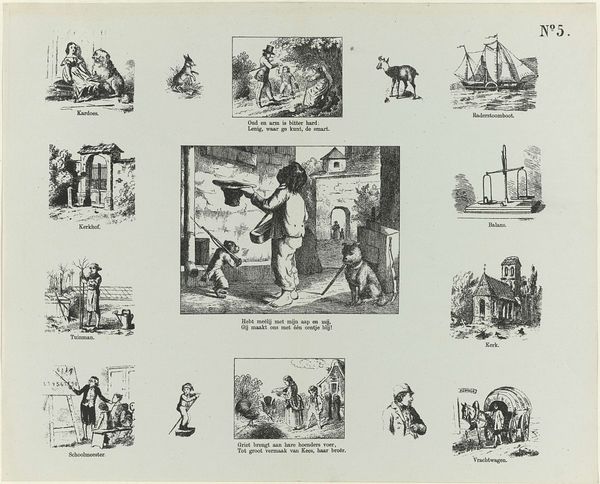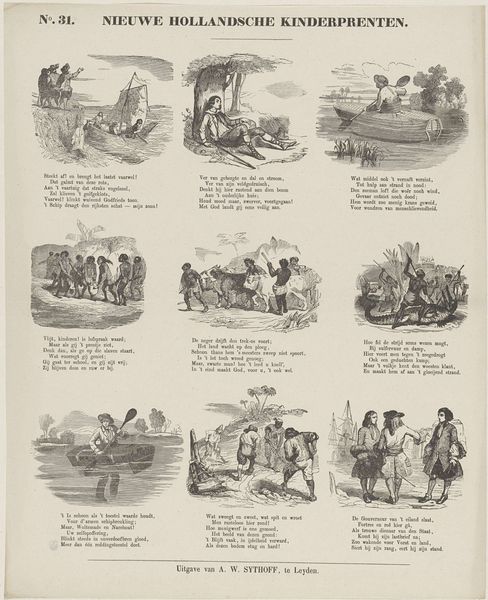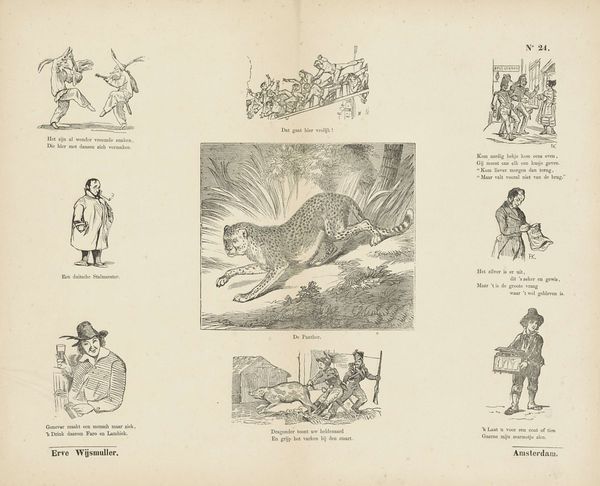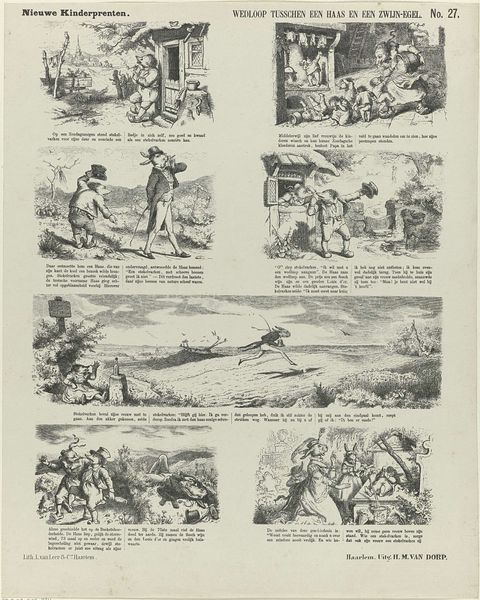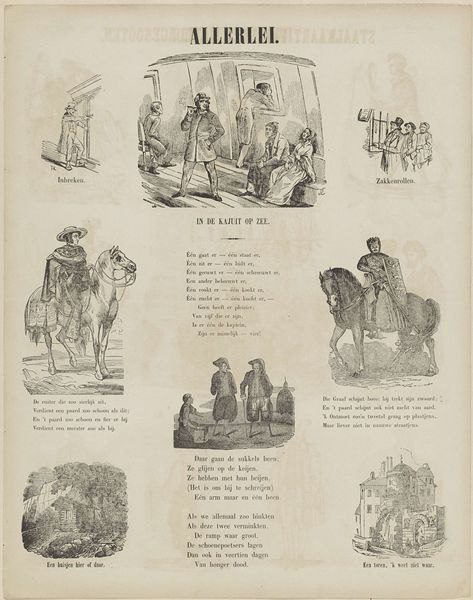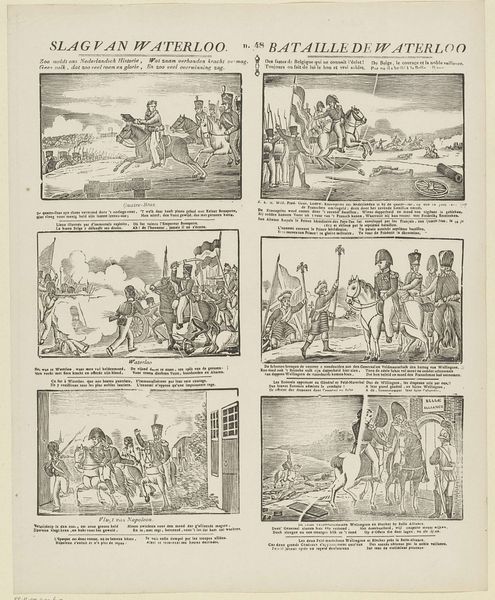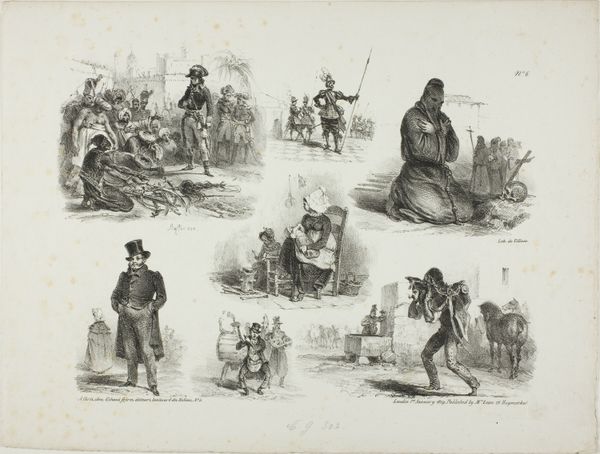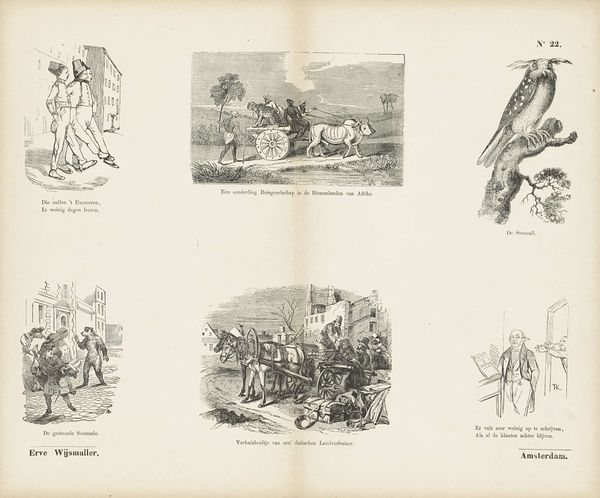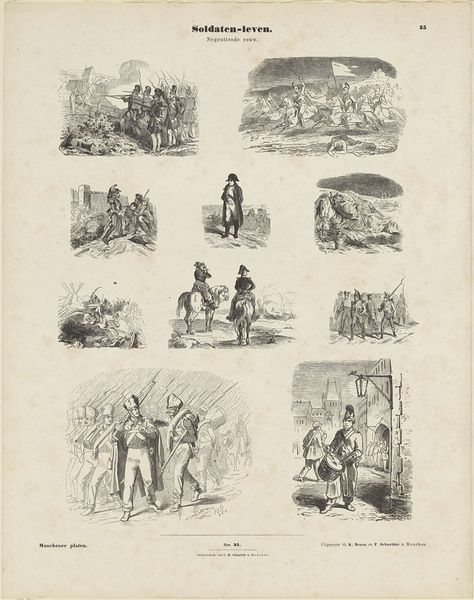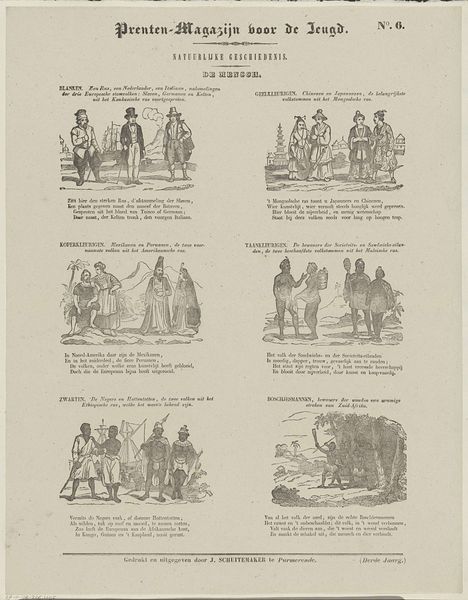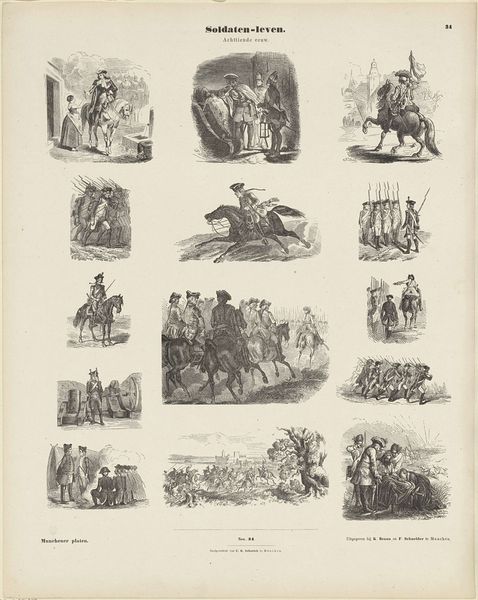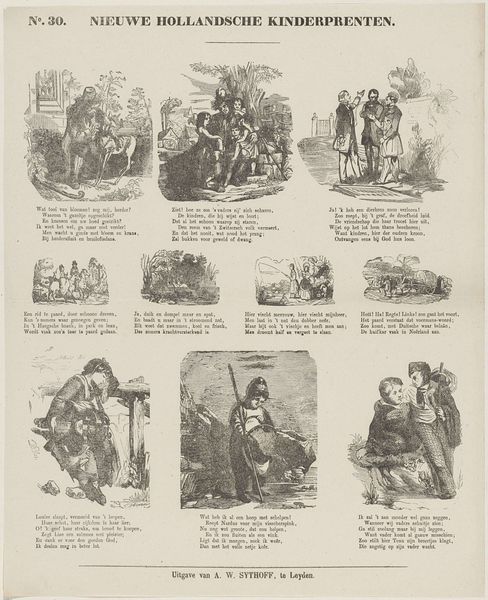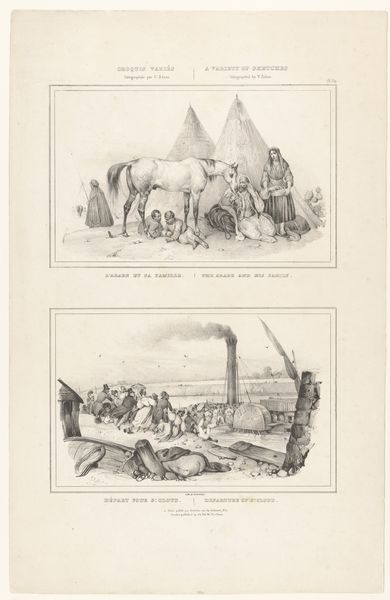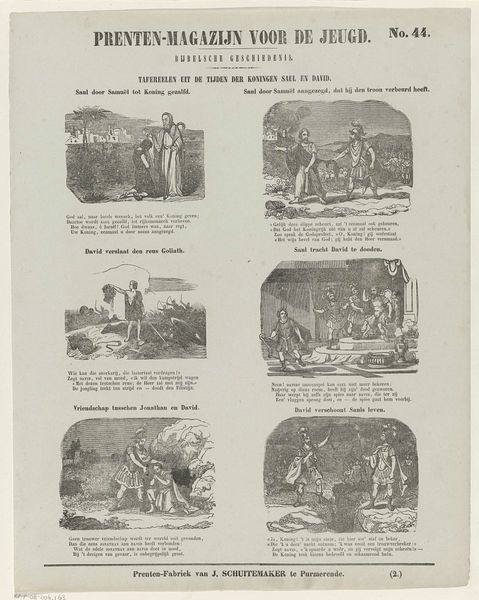
lithograph, print
#
comic strip sketch
#
narrative-art
#
lithograph
# print
#
old engraving style
#
sketch book
#
personal sketchbook
#
idea generation sketch
#
sketchwork
#
journal
#
comic
#
sketchbook drawing
#
genre-painting
#
history-painting
#
storyboard and sketchbook work
#
sketchbook art
Dimensions: height 444 mm, width 346 mm
Copyright: Rijks Museum: Open Domain
Editor: This is "De geschiedenis van Pieter, die de school verzuimd had" or "The Story of Peter, Who Missed School", a lithograph print by Franz Graf von Pocci, dating roughly from 1843 to 1920. It’s got this almost comic strip feel to it, kind of a lighthearted narrative. What strikes me most is the very clear way each frame leads into the next; what do you see in this piece? Curator: Initially, I’m drawn to the contrasting structural elements at play. Notice the sharp geometric division of the page into distinct panels versus the organic, flowing lines within each vignette. How does this juxtaposition guide our reading of the narrative? Editor: I guess it creates a visual rhythm. You see the stark contrast frame by frame between what he should be doing, like being in school, with what he actually is doing like, fishing. Curator: Precisely. Note how Pocci uses linear perspective, especially in the classroom scene and the fishing scenes, to create depth and draw the eye. Does this contribute to a sense of realism or perhaps something else? Consider, too, how the lithographic process itself – the stark black lines on a white ground – emphasizes clarity and form, even within scenes implying dynamic motion. Editor: So, you’re saying it’s less about what's happening in the story, and more about how the artist is using these techniques to lead us through it? Curator: Indeed. And that these visual cues function as much to entertain as to instruct. Look at the framing in each panel—it is consistent, like stanzas in a poem, but with unique variations. Consider that form and function work together. What did you learn by considering those together? Editor: It changes how I view sequential art. The structure reinforces the story in subtle, clever ways, beyond just the content. Thanks! Curator: A pleasure. Focusing on visual and material elements opens exciting possibilities for appreciating and thinking about narrative images.
Comments
No comments
Be the first to comment and join the conversation on the ultimate creative platform.
